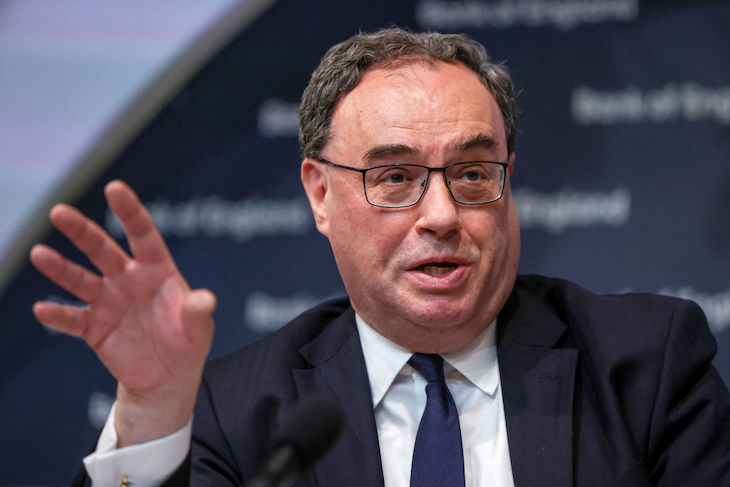The Bank of England has hiked interest rates again, taking the base rate from 4.25 per cent to 4.5 per cent. This is the 12th consecutive rise, voted for 7-2 by the Bank’s Monetary Policy Committee (MPC). It takes rates to their highest level since 2008.
The Bank had hoped it could stop raising interest rates months ago. It would require evidence of ‘persistent pressures’ on prices for them to keep hiking the base rate, the MPC said in February. But since then, we’ve had two more rate rises: one in March, which took the base rate from 4 per cent to 4.25 per cent. And another today. So when will interest rates settle down?
The narrative from the Bank is largely unchanged. It says the decision to continue to up rates stems from ‘continuing to address the risk of more persistent strength in domestic price and wage setting’. In short, the Bank’s strong, though perhaps questionable, belief is that rising wages contribute to inflation. Meanwhile, market expectation for where rates peak continues to drift higher: another 0.25 per cent hike is expected soon, taking the base rate closer to 5 per cent.
This latest rate rise is not a surprise. Once the Federal Reserve took interest rates in the States to 5-5.25 per cent last week, it became nearly impossible for the Bank not to act again. The inflation rate in the States was at 5 per cent on the year in March when the Fed voted to raise rates (it has since fallen to 4.9 per cent on the year in April). That’s half the rate of the UK’s inflation rate of 10.1 per cent on the year in March.
Both countries are struggling with a stubborn core inflation rate, which excludes energy and food. Both central banks are dealing with rates well above their targets of 2 per cent. But the UK’s situation remains far worse. So if the Fed still feels compelled to raise rates, it’s very difficult for the Bank not to follow suit.
What is surprising however, are the Bank’s new forecasts for the inflation rate and for economic growth. On the surface, it seems the Bank remains positive about the inflation rate, which it says will ‘fall sharply from April,’ down to 5 per cent by the end of the year (and down to around 1 per cent in two years). We’ll get April’s inflation rate figures in just under two weeks; let’s see how this prediction holds up. But this forecast is actually up from the February report, when the Bank predicted the rate would be down to 3.9 per cent in Q4 this year. Moreover, the Bank includes a caveat this time round that risks around its forecast for inflation are ‘skewed significantly to the upside’ and it has kept its wording about ‘persistent pressures.’
For all the positive noise being made, it seems the Bank is more cautious now about predicting such a plunge in the inflation rate. Bad news for consumers, and also for the government, who made one of their five key pledges this year to ‘halve inflation’ (yet another example of why politicians should not make promises on things out of their control).
Also eye-catching today is the Bank's new set of growth projections, which are much more positive than they were in the February report. In one of the biggest upgrades to growth forecasts in MPC history, the Bank no longer thinks the UK will enter a formal recession this year. It largely attributes this good news to falling energy prices and fiscal support in the Spring Budget. Its projection for the second quarter of 2023 has been lifted from a 0.7 per cent contraction (measured against the same quarter of the previous year) to zero growth, alongside positive growth figures for the next two years as well (albeit all under 1 per cent). Not until 2026 does the Bank expect year-on-year growth to surpass 1 per cent.
Of course, these numbers will change. But for now, they highlight mixed news: the economy is proving more resilient than originally predicted for this year (one of the reasons the rate of inflation has not fallen as fast as predicted), yet prospects for serious economic growth in the short and medium term remain extremely limited. It’s a reminder that, for all the talk of a ‘growth agenda,’ there are very few proposals on the table right now that would deliver anything substantial.







Comments